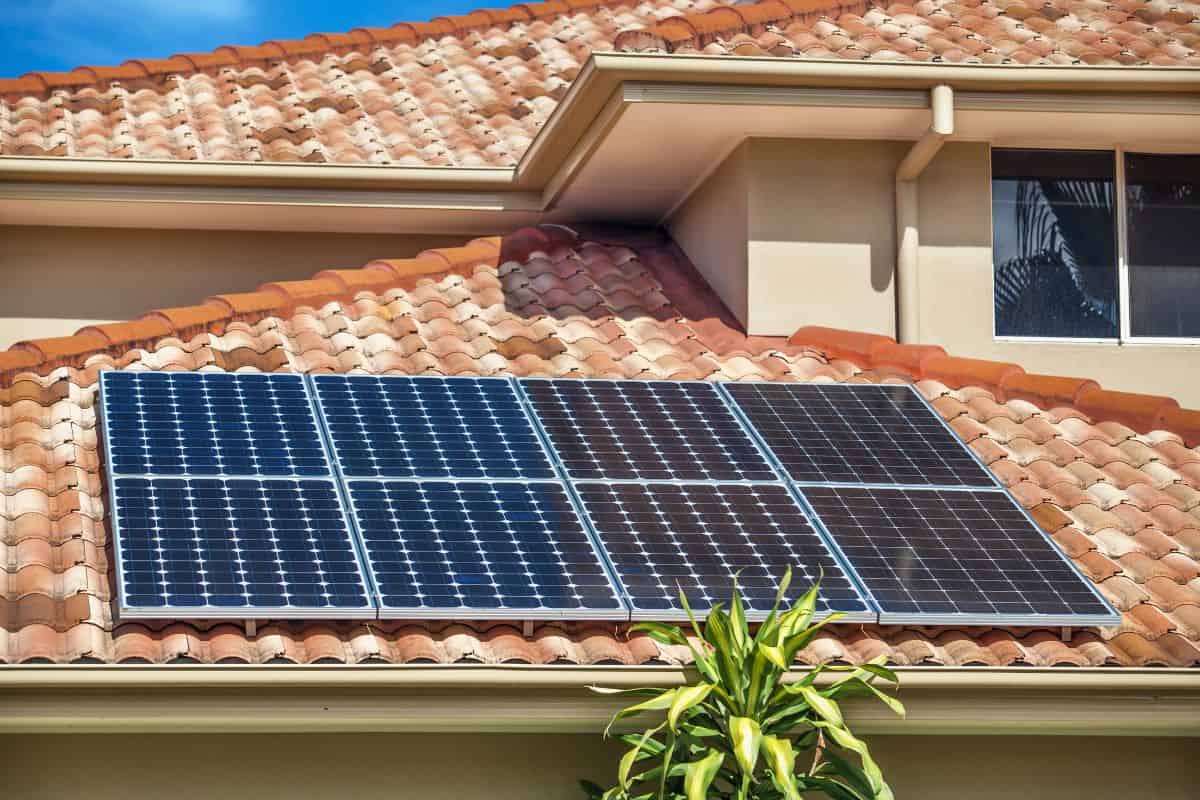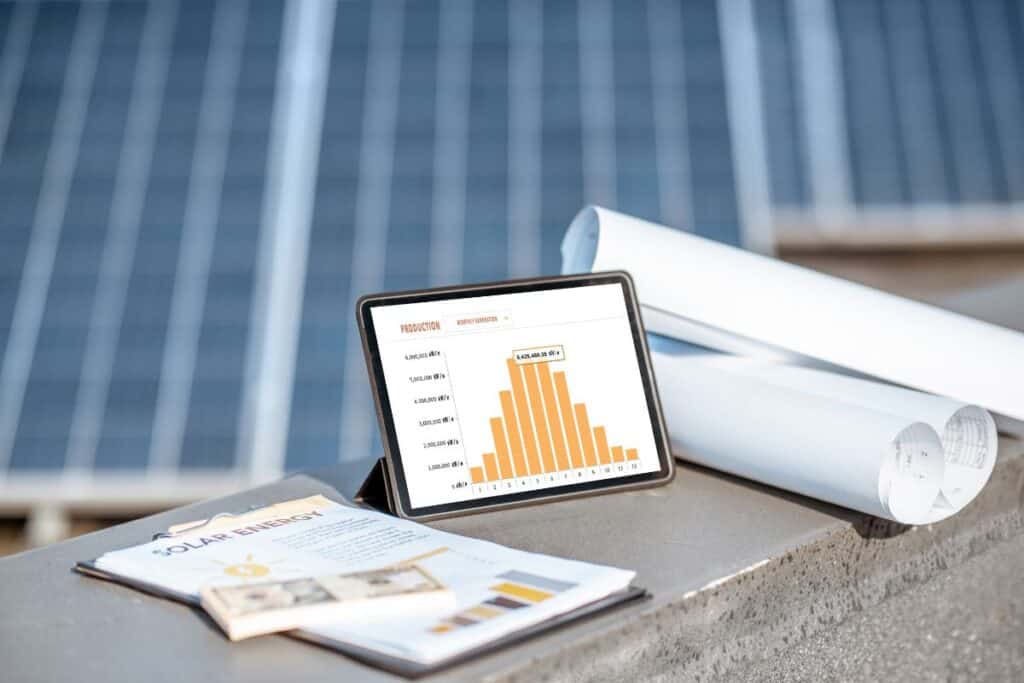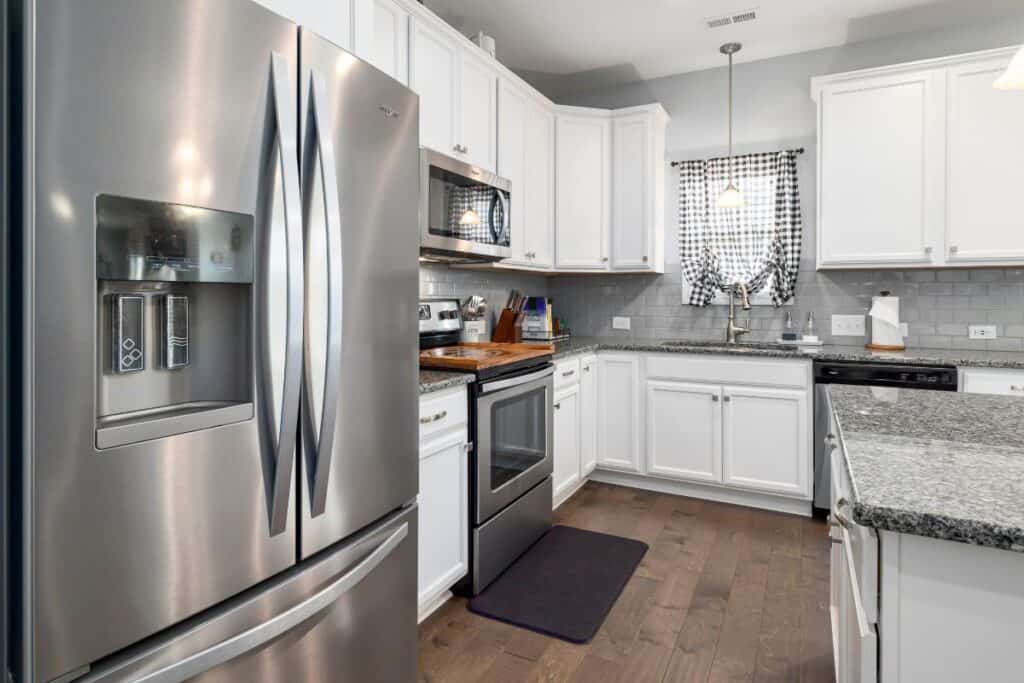So, you’ve been wondering if you can power your whole hose on solar panels, haven’t you? An interesting and increasingly common question, isn’t it?
Indeed, solar panels can be designed to power an entire home. The potential exists for all of your home’s energy needs to be met by solar power, and it all comes down to the system’s size and your home’s energy consumption.
Solar panel systems are usually tailored to the energy consumption of a home, with the goal of generating enough energy to meet all of its power needs.
Consideration of the home’s location, the available roof space, and the specific energy needs are critical when designing the system.

By the photovoltaic (PV) cells in solar panels, sunlight is absorbed and converted into electricity.
Once this direct current (DC) electricity has been generated, it is transformed into alternating current (AC) power by an inverter for use in the home.
The concept sounds simple enough, right? However, a few factors need to be taken into account.
What to look out for when powering your house on solar
Firstly, the amount of sunlight available for power generation is considered.
The amount of sunlight that reaches your area will largely determine the energy your solar panels can produce. Thus, more sunlight equates to more energy.
Secondly, the size of the solar panel system is a determining factor.
Solar panel systems must be large enough to generate the necessary power, which usually means a higher number of panels. The more panels installed, the more energy is produced.
Lastly, the energy efficiency of your home can greatly affect the ability of solar panels to power your entire home.
More energy-efficient homes need less electricity, which means fewer solar panels are needed to power the entire house.
Implementing energy-efficient measures around the house, such as LED lighting or energy-efficient appliances, can therefore reduce the overall size of the solar panel system needed.
Furthermore, energy storage is an essential aspect of a solar-powered home.
This is because the sun doesn’t shine all the time, and your home needs to be powered even when it’s dark outside.
A backup for when solar fails
Battery storage systems, such as the Tesla Powerwall, are commonly used to store excess power generated during the day, which can then be used at night or during power outages.
Despite the numerous factors that need to be taken into account, it is entirely feasible for a solar panel system to power your entire home.
It all comes down to a well-designed system and the right conditions. Many homeowners are already doing this, significantly reducing their reliance on grid electricity and lowering their electricity bills in the process.
In conclusion, while it is indeed possible for solar panels to power a whole house, a number of variables have to be taken into account.
With the right planning and design, the benefits of a solar-powered home can easily be enjoyed.
It’s an exciting time to explore solar as an energy source for your entire home, with technology continually advancing and becoming more efficient.

The Number of Solar Panels Needed for Full Home Power: Practical Examples Explored
To answer the question of how many solar panels it takes to power a house, multiple factors need to be considered.
These factors include the home’s energy consumption, the solar panel’s wattage, and the amount of sunlight received in the home’s location.
Typically, the energy usage of a home is calculated in kilowatt-hours (kWh).
To find out how many solar panels are needed, this consumption must be matched with the energy that can be produced by a solar panel, which is usually rated in watts.
The more watts a panel has, the more energy it can produce.
For instance, let’s consider a home that consumes around 10,800 kWh per year. This is close to the average energy consumption for a U.S. household.
In this scenario, a solar panel with a rating of 300 watts, receiving an average of 5 hours of peak sunlight per day, would produce about 1,500 watt-hours (or 1.5 kWh) per day.
In a year, it would produce around 550 kWh. To meet the home’s energy requirement, you would need approximately 20 such solar panels.
Now, consider a larger home with higher energy needs – let’s say 15,000 kWh per year. With the same 300-watt panels, you would need approximately 27 panels to meet this increased demand.
These examples are given under the assumption of 5 hours of peak sunlight per day.
Factors that play into solar energy production for your home
If you live in an area with less sunlight, you might need more panels. Conversely, if you live in an area with abundant sunlight, you might need fewer.
Also, the examples above use 300-watt panels, which are common in the residential solar industry. However, solar panel wattages can vary widely.

Panels can range from 150 watts to more than 400 watts. The higher the wattage, the more electricity the panel can produce, and the fewer panels you’ll need.
For example, if we stick with the first home’s energy requirement of 10,800 kWh per year but upgrade to 400-watt panels, you’d only need about 15 panels, assuming the same 5 hours of peak sunlight.
Of course, these are only estimates. The actual number of panels required may vary due to additional factors.
These include the efficiency of the panels, the angle and direction of the roof, and the presence of shading or other obstructions.
Also, remember that your energy usage can change over time.
If you plan to buy an electric vehicle or add on to your home, for example, your energy needs may increase. Conversely, energy-efficient appliances or LED lighting can reduce your energy needs.
Moreover, your energy usage may not be spread evenly throughout the year. You may use more electricity in the summer months if you’re running air conditioning, for example.
In summary, while a typical home might need 20 to 30 solar panels to meet all its electricity needs, this can vary widely.
To get an accurate estimate, it’s best to consult with a solar installer who can evaluate your home’s energy usage and your site’s solar potential. The installer can then design a system that’s sized correctly for your needs. (You can read our extensive article on how to find a professional solar installer)
The Calculations: Determining Your House’s Kilowatt Usage (With Practical Examples)
Understanding your household’s energy consumption is a key step in determining the size of the solar system needed.
Energy usage is measured in kilowatt-hours (kWh), and finding this number may seem complex, but with a few steps, you can easily determine your household’s consumption.
Let’s look at this process and explore three practical examples.
Electricity bills are the primary source of information about a home’s energy consumption. The monthly energy usage is usually listed in kilowatt-hours.
If it isn’t, it’s important to contact your utility company and request this information.
To calculate your annual energy usage, you’ll need to add up the monthly kWh totals from the past year’s bills.
If your consumption varies throughout the year, due to air conditioning use in the summer or heating use in the winter, it’s crucial to consider these seasonal variations for an accurate estimate.
However, if you’re starting from scratch or if you don’t have access to past electricity bills, you can make a rough estimate.
The steps to calculating household power usage
Start by listing all the major electrical devices in your home. This could include refrigerators, televisions, computers, washing machines, air conditioning systems, and more.
Each of these devices will have a power rating in watts (W) or kilowatts (kW), which tells you how much electricity it consumes per hour of use.
The power rating is found on a label or in the product manual.
To find the energy consumption in kWh, multiply the power rating by the number of hours the device is used each day, and then by the number of days per year it’s used.
Example 1: Let’s say you have a 1500 watt (or 1.5 kW) air conditioning unit that runs for 8 hours a day, for 90 days a year. Its annual energy consumption would be 1.5 kW * 8 hours/day * 90 days/year = 1080 kWh/year.
Example 2: Suppose you have a refrigerator with a power rating of 200 watts (0.2 kW). It runs 24 hours a day, 365 days a year. Its annual energy consumption would be 0.2 kW * 24 hours/day * 365 days/year = 1752 kWh/year.
Example 3: Let’s consider a television with a power rating of 100 watts (0.1 kW). If you watch it for 4 hours a day, 365 days a year, its annual energy consumption would be 0.1 kW * 4 hours/day * 365 days/year = 146 kWh/year.

How to calculate your household’s total energy consumption
To calculate your household’s total energy consumption, simply add up the annual kWh usage for all your devices.
Keep in mind this is a rough estimate; actual consumption can vary depending on factors like the efficiency of the device, the temperature setting, or whether the device is in standby mode.
Also, remember that energy usage can change over time.
If you’re planning to purchase new appliances, add more members to your household, or make changes to your lifestyle that could impact your energy usage, it’s important to take these factors into account.
Moreover, it’s worth noting that reducing your energy consumption before installing solar can often be a cost-effective move.
Implementing energy efficiency measures such as using energy-efficient appliances, LED lighting, or better insulation can significantly reduce your energy usage and hence the size and cost of the solar system needed.
In conclusion, calculating your home’s energy usage in kWh is a key step in planning for solar.
It’s a process that requires some time and effort, but it will ultimately help ensure that your solar system is sized correctly for your needs. It’s advisable to work with
The Energy Breakdown: Major Household Appliances and Their Kilowatt Usage
Understanding the energy consumption of individual appliances can help you better gauge your overall energy usage.
This knowledge can be especially useful when planning a solar panel system for your home. In this section, we’ll break down the average power consumption of common household appliances.
Here is a table that shows the average power consumption of some common household appliances:
| Appliance | Average Power Consumption (Watts) | Average Power Consumption (Kilowatts) |
| Refrigerator | 150-200 | 0.15-0.2 |
| Freezer | 150-200 | 0.15-0.2 |
| Oven (electric) | 2000-5000 | 2-5 |
| Microwave | 600-1200 | 0.6-1.2 |
| Dishwasher | 1200-2400 | 1.2-2.4 |
| Washing Machine | 500-1500 | 0.5-1.5 |
| Clothes Dryer | 1800-5000 | 1.8-5 |
| Air Conditioner (window unit) | 500-1440 | 0.5-1.44 |
| Air Conditioner (central) | 2000-5000 | 2-5 |
| Heater (electric) | 1500-2000 | 1.5-2 |
| Water Heater (electric) | 3000-4500 | 3-4.5 |
| TV (LED) | 30-100 | 0.03-0.1 |
| Laptop | 20-50 | 0.02-0.05 |
| Desktop Computer | 60-250 | 0.06-0.25 |
| Light Bulb (incandescent) | 60 | 0.06 |
| Light Bulb (LED) | 8-12 | 0.008-0.012 |
Note that these are approximate values. The actual power consumption of an appliance can vary based on its size, model, age, and usage patterns.
Also remember, these figures represent power consumption per hour of use.
To calculate the energy consumption in kilowatt-hours (kWh), multiply the power consumption in kilowatts by the number of hours the appliance is used.
If you run an air conditioner with a power consumption of 1.5 kW for 8 hours, it would consume 1.5 kW * 8 hours = 12 kWh of energy.
By understanding how much energy each appliance uses, you can make more informed decisions about your energy usage and your solar system needs.
Energy-efficient appliances can help reduce your overall consumption and make your home more compatible with solar power.
